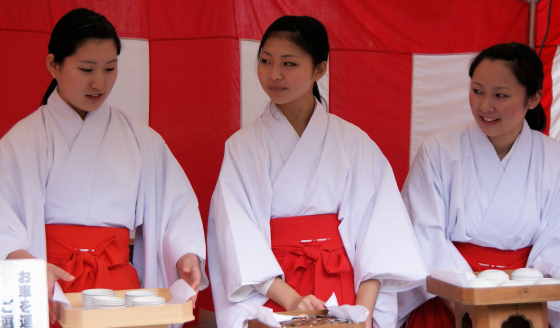I'm a big fan of kagura, the traditional performing art of japan that is the least well-known. In my area, Iwami in Shimane, kagura is hugely popular,but over the years I have been fortunate to see some different styles of kagura in Izumo, Hiroshima, Yamaguchi, Oita, and Miyazaki, and, as shown here, on the Oki Islands.
Nowadays normally only performed during the summer festivals, I was able to see a short performance of three dances put on for a group of tourists on Nishinoshima Island, and the style is Dozen Kagura as opposed to Dogo Kagura. One unusual feature of Dozen kagura that differed from all the others I have seen is the involvement of Miko, shrine maidens.
The second dance was called Sakibarai or Sakiharai. The dancer represents Sarutahiko and the dance is a protective purification dance.
The third dance was Kiribe, but unfortunately I know nothing about the character or meaning of the dance.
I don't know much about the technicalities of music, but a source says that here with dozen kagura it switches between 4/4 and 3/4 which is rare in traditional Japanese music but common in traditional Kprean music. Also worth noting is that the space the dancing is performed within is quite small compared to say Iwami Kagura.
The previous post in this series on the Oki Islands was on Uzukamikoto Shrine.















































